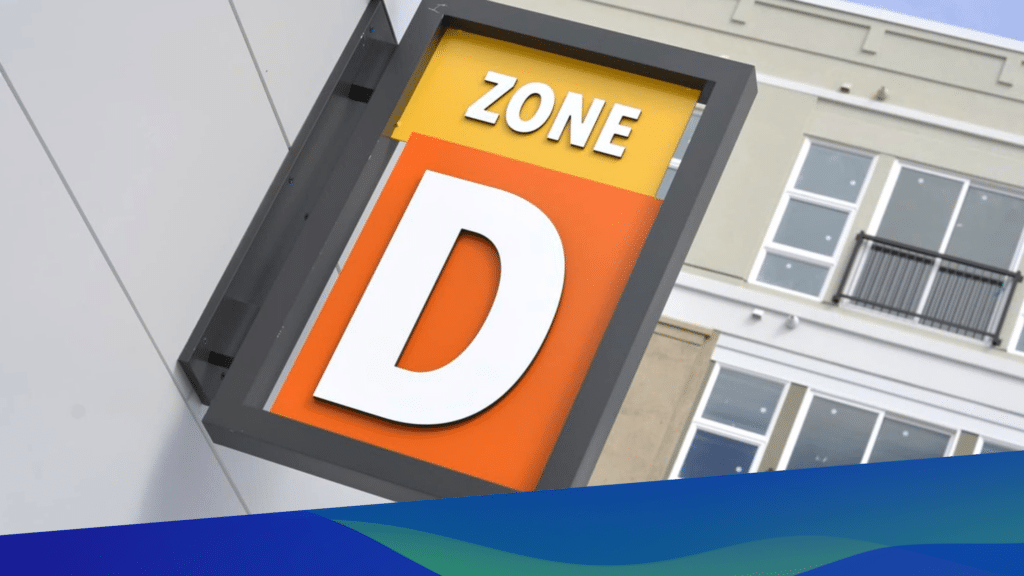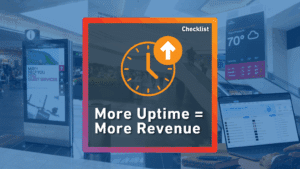Most real estate developers are all too familiar with project scope and budget creep.
No matter how diligent you are in setting up contracts and contingencies, every project runs the risk of overages. And the more complex the build, the more variables involved and the harder it is to juggle. However, by leveraging strategic signage design early in the process, developers can reduce or even eliminate several culprits of the dreaded creep.
In this blog, Jack Hulme, Creative Director at Gable’s Environmental Graphic Design Studio, shares tips for how a bit of advanced planning can make a big impact.
The ROI of Strategic Signage Design

When starting a new real estate development project, your primary focus is undoubtedly on the big-ticket items — financial feasibility, site evaluations, zoning, and compliance considerations. Signage is likely one of the last things on your mind since it’s typically one of the last things to be installed. While that may be true, advanced visual communications planning can have a profound impact on compliance, brand continuity, and material availability.
When combined with a design strategist guiding the process, these three factors can all shave time off the schedule and keep your budget on track.
1. Compliance: Don’t Let Regulations Hold You Back
Mixed-use properties, in particular, feature amenities like pools, fitness centers, lounge spaces, and retail and recreational areas. They require a myriad of sign types, many of which are mandated by local regulations and codes that vary by municipality. Beyond the obvious are fire department sign requirements, indications for sprinkler valves, ADA compliance signs, and more. While not the most glamorous from a design standpoint, each of these signs plays a pivotal role in ensuring safety, accessibility, and functionality.
By leveraging the design phase to identify all the possible required and desired sign types needed for your project — from building identification to wayfinding and static to digital — you’ll successfully sidestep last-minute regulatory hurdles when time and budget are both running thin. Factoring these in at the onset also builds up your contingency, as it’s always easier to strike a sign from the program than adding it at the eleventh hour.
2. Brand Continuity: Improve Client Relations
A cohesive design process that takes into account all required signs ensures a seamless aesthetic throughout the property, inside and out. This alignment isn’t just about looking good; it’s about promoting your client’s brand and ensuring visitors can easily understand and navigate the space.

We’ve had the opportunity to collaborate with internal marketing departments and understand what motivates and inspires them. As brand ambassadors, they want to ensure identity standards are upheld and carried through architectural design and visual communications. Given the opportunity to consider all available space, signage designers can uncover hidden opportunities to incorporate brand elements throughout the built environment beyond just building identification.
By proactively planning and communicating signage placements, builders can also secure the necessary permits and optimize electrical and data provisions for digital displays (as well as structural components), for example. This can all be done at a fraction of the cost and time of having to retrofit drywall to accommodate late-stage wish list items that involve wiring or impact the infrastructure. Plus, your client will be thrilled because the end result looks intentional, not like an afterthought, and you come in on time and on budget.
3. Materials: No Need to Settle for Less Than What You Want
When you kick off your signage planning early, it opens the doors to sourcing the ideal materials you’ve envisioned for your property, ensuring they arrive when needed and at a budget-friendly price point. Waiting too long in the process might land you between a rock and a hard place where either the desired materials are not readily available, or you’re faced with the unenviable choice of paying a premium for expedited delivery.

Even if fabricators can craft alternative solutions to simulate the original, such makeshift approaches might compromise functionality, durability, and aesthetics. For instance, while digitally printed or paint-matched colors might seem like a quick fix, they might not hold up the same way under varying lighting conditions or prolonged sun exposure.
Clear Expectations Yield Better Results
When it comes to signage design, starting with a clear plan makes all the difference. By mapping out your needs early, including rough ideas for lighting and client wish list items, and being precise about definite signage requirements, you reduce the chance of costly oversight. This means less time spent on concept sketches that aren’t feasible and fewer last-minute surprises during fabrication and installation.
When you know what you want (and what’s possible) from the beginning, you can better communicate with your clients, avoid delays and unexpected costs, and get a better outcome.
If you want to avoid project scope and budget creep, consider how adding a strategic signage design phase into your process can help your next project go smoother.
To learn more about Gable and our design process, please contact us using the form below or by calling 800-854-0568. We’ve worked with real estate developers for over 40 years and are happy to share examples of our successful collaborations.
About Gable
Gable has been a leader in visual communications for 40+ years. We are passionate about elevating the way people perceive, interact with, and remember brands, buildings, and places. With a rich legacy in blending the timeless artistry of traditional signs with the dynamic possibilities of video displays & integrated AV systems, Gable continues to shape the future of visual communications. For more information, visit www.gablecompany.com or call 800-854-0568.


